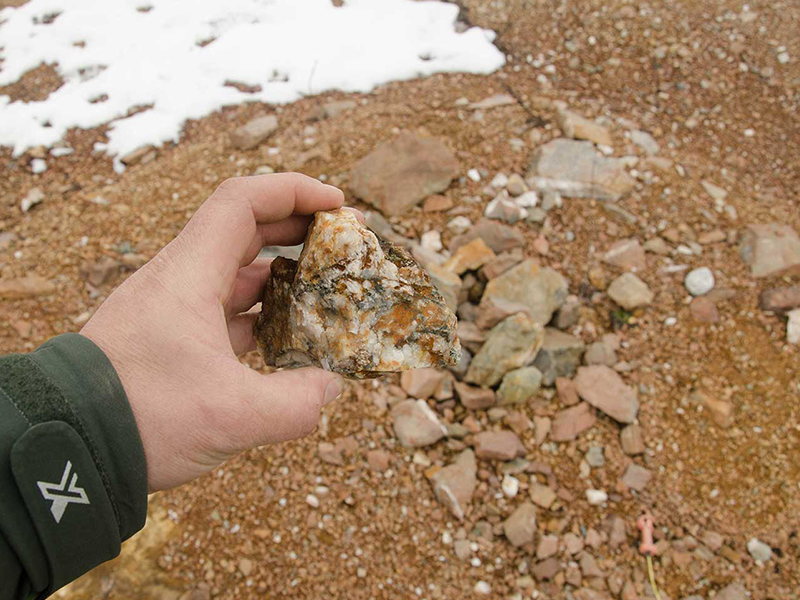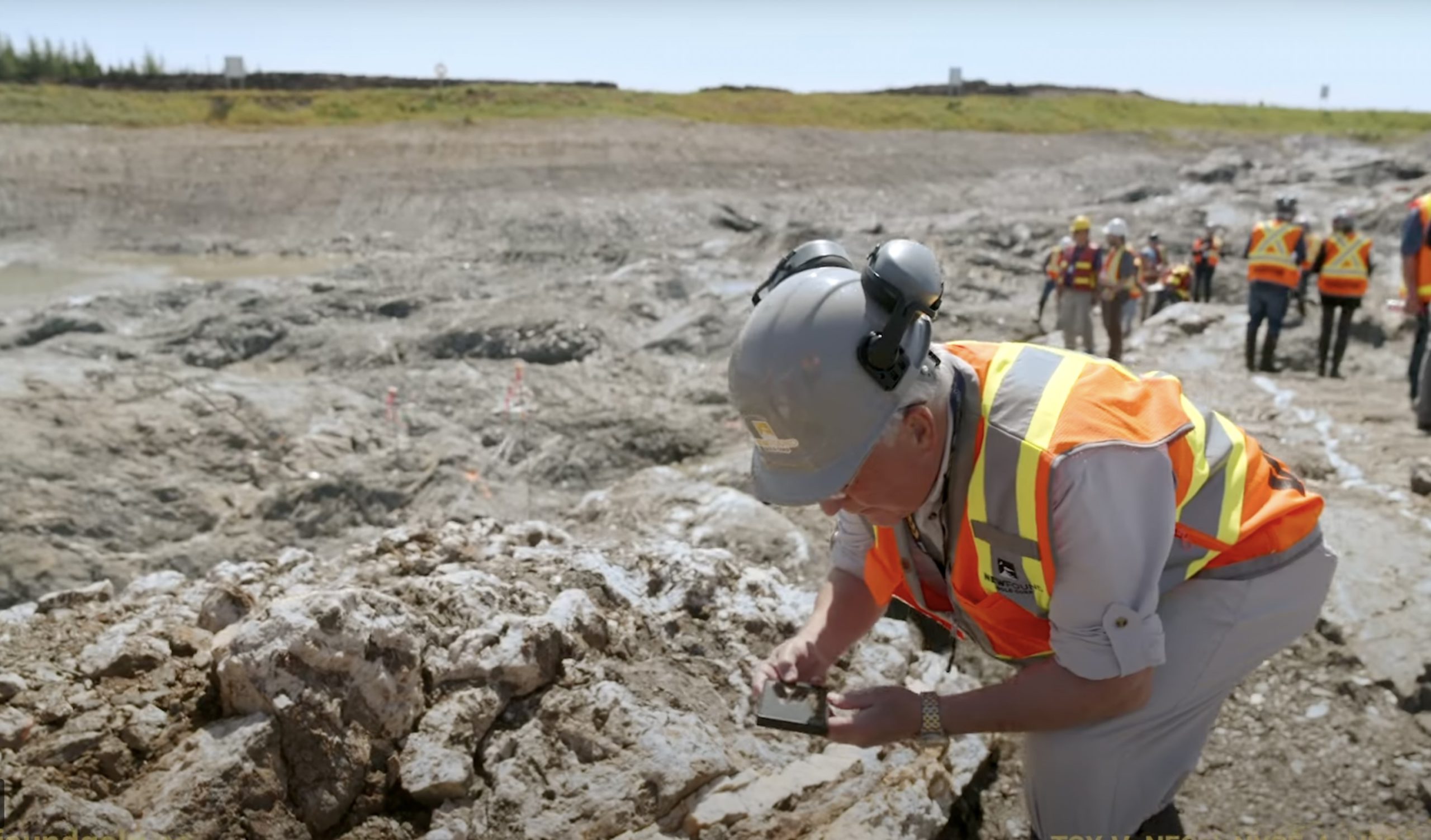Mine Training Surges Across Northern Canada
Raymond Mercer and three other Inuit from Nunavut’s Kivalliq region are among hundreds of aboriginals training to be the vanguard of a new labour force for mining and exploration across northern Canada.
By September of this year, through the Kivalliq Mine Training Society partnership agency, they’ll have graduated from a six month hard-core training program in hard-rock mining at contract miner CMAC-Thyssen’s plant in Val D’Or Quebec, going to guaranteed jobs at Agnico-Eagle’s Meadowbank gold mine near Baker Lake.
“It’s a good opportunity to have a fulltime job close to home,” says Mercer who’s lived in Rankin Inlet all his 33 years. That would be a rare benefit in the north, where remote sites force a two-week rotation that’s hard on families and lifestyles.
“The training’s been awesome, CMAC-Thyssen’s been wicked-awesome to work for, they know their stuff,” says Mercer, who says the toughest part has been the separation from his wife and three kids.
“They’ll be able to go and be hired on any project in Nunavut and Canada,” says Julie Turgeon of CMAC’s human resources department.
Dozens of Programs
Mercer’s goals mirror those of hundreds of First Nations and Inuit people in Yukon, NWT and Nunavut who’ve been engaged in almost a decade of innovative training programs.
Dozens of other specialized programs are helping industry satisfy their hiring goals, and ease the pressure on governments to employ a very challenging demographic.
Three major forces have made it happen: demands from all levels of government for a bigger piece of the mining action for residents; a rapid and strategic change in attitude among mining companies toward aboriginal interests; and visionary multi-million dollar, multi-year funding programs from Ottawa.
It’s taken years to tie all this together and produce results, or as Hilary Jones, executive director of the NWT Mine Training Society, puts it: “It takes a decade to become an overnight success.”
Creating partnerships among industry, First Nations and territorial governments was a fundamental condition of being able to tap the federal government’s national Aboriginal Skills and Employment Program or ASEP, now nine years old and set to expire in March of 2012.
“Everything that we are participating in has multiple funding partners,” says Gaye Hanson, interim director of the Yukon Mine Training Association.
To tap ASEP, each region formed a society to work out a training and needs plan, and a budget. With ASEP capped at 50 per cent, it is not uncommon to have six or more agencies involved in a single course. The societies recruit applicants, and contract with existing schools, colleges or private companies to deliver the actual training. A key ASEP rule is that a partner must offer graduates a full-time job on completion.
In most cases, the applicant pays nothing. And unless there is a substantial outside funder, ASEP-backed programs are closed to non-aboriginal applicants.
Shifting Society, one person at a time
“We like to talk about success one person at a time,” says Jones, whose NWT society was the first to be set up north of 60.
Its genesis was in the aggressive local hiring quotas by the NWT’s three big diamond miners -and the barriers encountered by an aboriginal labour source woefully ill-equipped to meet those expectations.
Fewer than half the aboriginal population under 30 have completed high school. Many have the burden of minor but still criminal records, an absolute no-no in the security obsessed diamond industry. Addictions, conflicts with traditional lifestyles and the devastation from an earlier generation of residential school abuse were all factors.
But ASEP’s big budget and long-term vision helped to bridge these issues and lever the partnerships and money needed.
It’s a process that even by Northern standards is breathtakingly expensive. In the NWT’s eight years ending in 2012, some $58 million ($34 million from partners and $24 million from ASEP) will have been invested. But a recent independent evaluation of the MTS project’s two phases shows it’s making a substantial difference.
First-phase targets were way too optimistic, as fewer than half the projected 1,100 trainees materialized. But of some 450 who were trained, 40 per cent found work. The second re-tuned phase now underway will likely exceed its targets, as enrolment is projected to top 500 with at least 183 of these expected to get mining-related work.
MTS diamond mine partners report it’s helped their hiring stats: BHP Billiton’s Ekati mine, and Rio Rinto’s Diavik diamond mines exceeded their aboriginal hire commitments. DeBeers Canada, because of a 2008 cutback, is catching up.
“What we have to do as an industry, is do everything we can to help that move along,” says mining veteran Bill Mercer, vice president of exploration for Avalon Rare Metals and, as past president of the Prospectors and Developers Association of Canada, a strong advocate of changing the way mining does business.
“What you’re doing is gradually shifting the society so that maybe the next generation will become the engineers and geologists. You’re laying a foundation stone that can lead to further advancement later,” says Mercer.
Mining’s New Face Wears Mascara
A major innovation for northern mine trainers is to take their programs into the communities, rather than drop students into far-away colleges or mine sites. Jones says her programs also cover life skills, like budgeting and balancing home and family, with post-program support.
Even the criminal records barrier is breaking down, as mines do individual assessments, rather than automatic rejections.
The MTS’s evaluation uncovered one startling change: a big spike in the number of women claiming training spots and mining jobs, and waking up mine HR officials to a potential new pool of women who view mining as less dangerous and dirty, and more technology driven, says Jones.
“We’re changing the face of mining, and it wears mascara,” says Jones with delight, pointing to a 30 per cent female participation rate, compared to 14 per cent nationally.
Nuna Training Technologies is a private sector venture that trains its own workforce and serves other specializing in simulator and heavy equipment-based training across the Arctic and Canada. Manager Bob Huculak says they were among the first in Canada to offer it in 2001 and has adapted the simulator “classroom” to fit in a sea-can shipping container, readily transported by road, water and even air.
One of Nuna’s units was at work early in 2011 at the Det’on Cho Training Centre near Yellowknife.
Its aboriginal owner, the Yellowknives Dene Det’on Cho Corporation, partners with the NWT training society, and runs its own programming , says director Vince Halushka, including bear monitoring, IT for small camps, and ice road construction.
Halushka also serves on the board of the Contaminants Remediation Training Organization of Canada (CRTOC), and says the ASEP program has been instrumental in enabling that group as well.
“The ASEP program is absolutely critical… you can’t say enough about what it’s done over the past five years.”
Early success in Nunavut
With barely two years behind it, the Kivalliq Mine Training Society has already doubled its earliest targets. “We’ve actually had 300 new hires since January 2010 in about 19 occupations,” says director Kevin Bussey.
Almost all have gone to the group’s sole industry partner, the Meadowbank Mine operated by Agnico Eagle near Baker Lake.
Bussey is excited by the job potential for projects like Agnico Eagle’s Meliadine, Newmont’s Hope Bay, and Acelor’s Baffinland Iron. And like the other territories, Bussey is anxious to see a strong federal commitment continue for northern mine trainin
g.
With a brand new trades centre in Rankin Inlet, and a long range commitment by Ottawa to create a post-secondary institute in Cambridge Bay, training is large on Nunavut’s horizon. But a more immediate challenge for the KMTS will be to extend its reach into the Baffin (eastern) and Kitikmeot (western) regions and create a single Nunavut training.
Winning Yukon’s Talent Wars
Yukon’s mining story today is a flurry of feverish grassroots and advanced exploration, mine construction and active production.
“This is much more sustainable and we’re talking about at least a decade of action,” says Gaye Hanson, of the Yukon Mine Training Association. “There’s a real war for talent on, and it’s going to be much more active than it was even last year.”
That’s where YMTA comes in: in the past three years, it has funded some 44 different training programs, enrolled 813 students and boasts that 502 of them got jobs related to their training.
Set up in 2005, YMTA is anchored by ASEP-$2.2 million in 2009-10-while CanNor, the federal government’s relatively new Canadian Northern Economic Development Agency, almost matched it. The Yukon Government, and the Yukon Workers’ Compensation Health and Safety Board topped up the society’s $5 million budget that year.
Most of Yukon’s actual training is delivered by Yukon College at its impressive Whitehorse trades and arts facility, and at communities and sites across the territory.
“[With 19 partners] part of the way our funding is structured is that it forces leverage from other partners,” says Hanson. YMTA is also diversifying into training that can tap other sources of funding.
Yukon College reprofiles to attract talent
With its mandate to deliver trades training well established, Yukon College vice president of education and training, Dr. Karen Barnes, recognized some time ago that mining was not well connected to the college.
“I felt we could rebrand what we were already doing to get the attention of the industry,” says Barnes. Her real vision: to create a Yukon school of mining. Barnes, who takes over later in 2011 as college president, also wants to build a centre of excellence for science and research innovation, with the YMTA and the Yukon Chamber of Mines alongside.
“A lot of our work is focused on cold climate adaptation, and that’s what would make us unique (to northern mining),” she says. She is awaiting word from CanNor to fund the creation of a two-year, permanent diploma program in geological technology that could start in 2012.
With these lofty visions, and the break-neck pace of activity in the territory, Barnes admits her biggest challenge may simply be getting all the right people in the same room at the same time.
Loud Applause for ASEP, Now ASETS/SPF
The federal government’s Aboriginal Skills and Employment Program (ASEP) pumped $190 million dollars into 24 aboriginal partnership programs across Canada since 2003, and its impact across the North has garnered high praise.
“It’s really great for industry, for aboriginal people, for the North. Some might look at it as expensive training – but otherwise it wouldn’t happen like that,” says mining veteran Bill Mercer.
ASEP will sunset in March of 2012 and it has been replaced with what looks like an even richer initiative.
Human Resources and Skills Development Canada, advises that the new Aboriginal Skills and Employment Training Strategy (ASETS) has a $1.6 billion commitment, and the Skills Partnership Fund (SPF) programs has $210 million. Both were launched in July 2010 and have five year horizons.





Comments